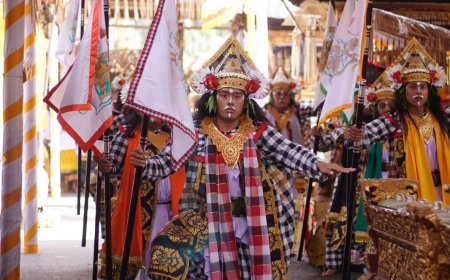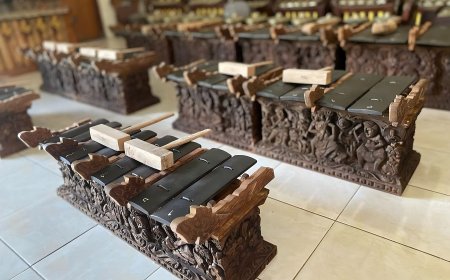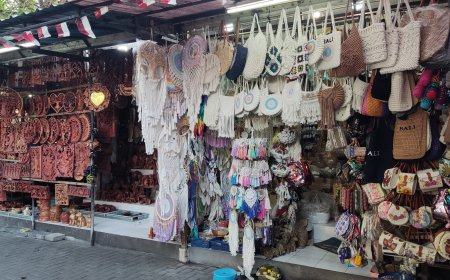Tracing the Beauty of Gambuh Dramatari: When Drama Theatre and Dance Become One
Gambuh dramatari is one of the dance arts performed in the form of theatre. Aside from the dominating dance elements, there are also other art elements such as music, literature, dialogue, visual arts, along with makeup that are integrated harmoniously and beautifully. Dramatari gambuh is believed to be one of the sacred dances in Desa Adat Pedungan, Pedungan Village. Until now, Dramatari gambuh is still performed very regularly, which is 3 days after Tumpek Wayang Day.
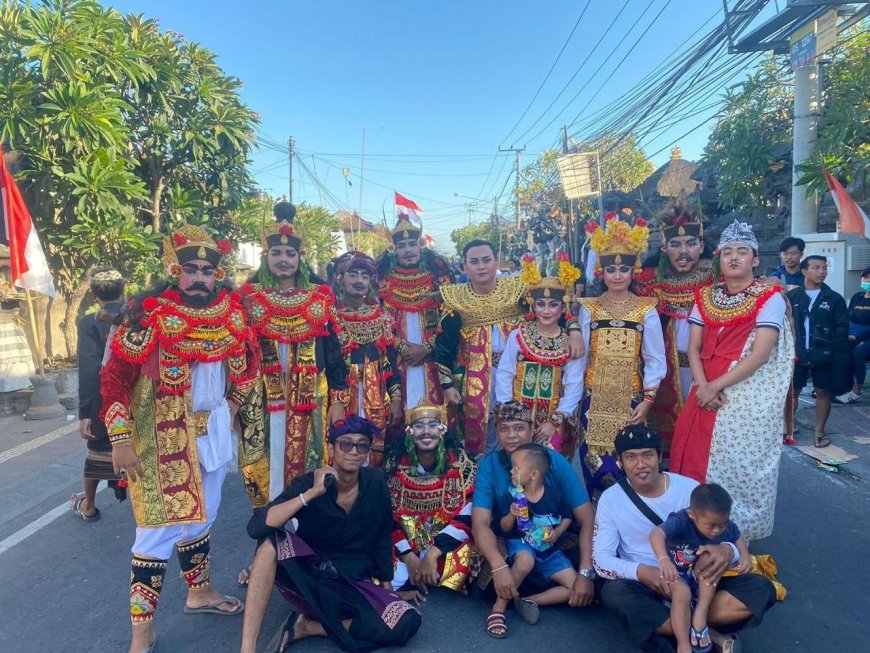
What is Dramatari?
Dance is one of the important aspects in supporting Balinese culture. Dance is very influential in traditional arts, culture, and also tourism in Bali. Balinese dance is closely related to people's lives. Since the primitive, pre-Hindu, feudal era, until now Balinese dance continues to be developed with the lack of ideas of the artists who create it, but Balinese dance is truly present and becomes a necessity in the wheels of life of citizens in Bali.
In Bali there are several art forms that are included in the type of drama. Dramatari is a dance performance performed by acting out a story. One of the dance dramas in Bali is "Dramatari Gambuh". Dramatari Gambuh is one of Bali's impressive cultural heritages. Gambuh dance drama is the oldest dance drama and is considered the source of drama in Bali.
Dramatari gambuh is performed followed by gamelan pegambuhan with heartbreaking flute sounds and presented by seasoned dancers who sing and are able to adjust the conversation to the sound of the gamelan. Dramatari gambuh usually takes the source of the play from panji stories, these plays are generally in the form of lakon babon or main plays that stick to the storyline contained in the lontar malat.
The Origin of Gambuh Dramatari
Gambuh dramatari is a theatre-like performance art. Besides the dominant dance elements, there are also other art elements such as music, literature, dialogue vocal art, visual art, and makeup art that are integrated harmoniously and beautifully. Gambuh is a performing art in the form of dance drama that originates from the malat/panji story, but also because of the emergence of wayang gambuh along with new creativity in the 21st century in Batuan Village, Gianyar.
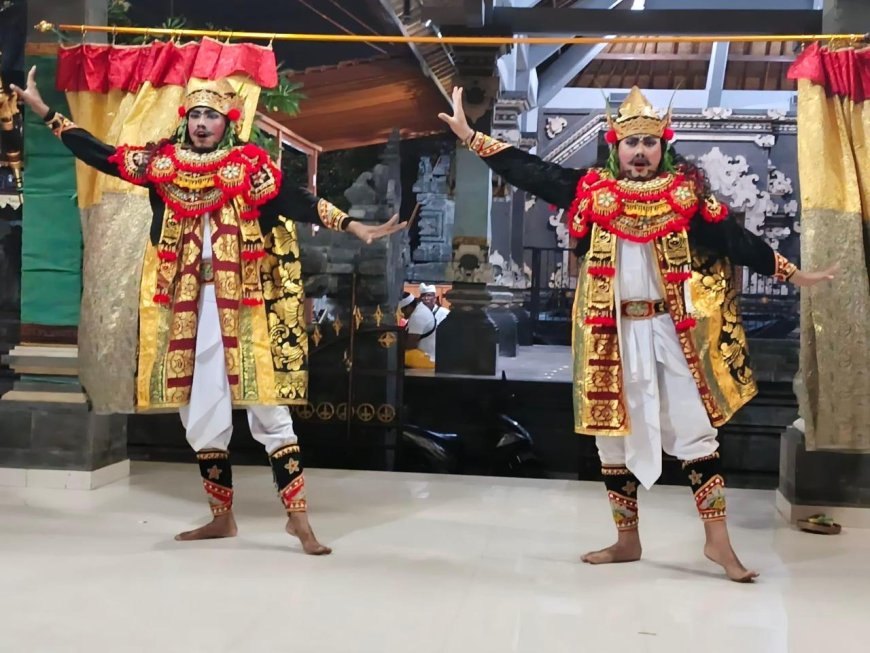
Gambuh Dramatari (Source: Editor Collection)
Gambuh is a Balinese dance drama that was formerly performed for court purposes. Gambuh dance is considered the source of all Balinese classical dance. Gambuh dance in Pedungan has been performed since the 1800s. Where, the development of gambuh dance started from the journey of his ancestors from Tegalalang Village, Gianyar who later settled in Pedungan Village.
Gambuh Dramatari Performance
Gambuh Dramatari Pedungan is usually performed most often during the religious ceremony (piodalan) of Sang Hyang Taksu at Pura Puseh, which is three days after Tumpek Wayang Day. However, this drama will not only be performed based on the commemoration after the feast day, but will also be performed if there are residents from Pedungan village who want to pay a debt or in Balinese terms called sesangi or naur sesangi (kaul).
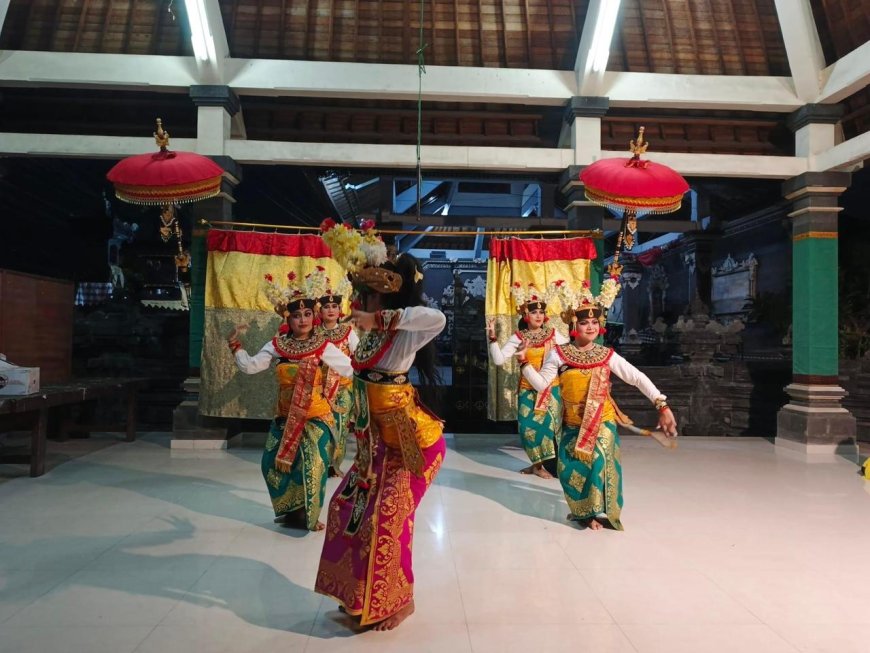
Gambuh Dramatari (Source: Editor Collection)
Gambuh Dramatari is a drama in which there is a storyline in the performance. Generally, the stories performed in gambuh drama are taken from the romantic poem malat which tells the adventures of Prince Panji Inu Kerta Pati and his consort Candra Kirana. The language used by the performers in the gambuh dance performance is Kawi. Pagambuhan gamelan accompaniment music is a set of gamelan to accompany gambuh drama that has the largest number of instruments of the types of gamelan for Balinese dance accompaniment. As described by Prof. Dr. I Wayan Dibia (1999), the instruments of gamelan gambuh consist of several large flutes, one or two rebabs, a pair of small drums, a kempur, kajar, klenang, kenyir, a pair of gumanak, aangkon ricik, satungguh kangsi, and a gentorang.
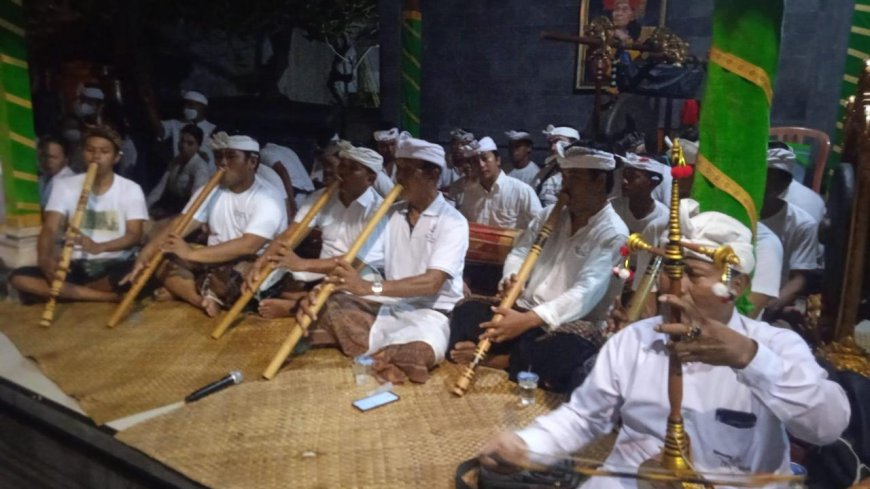
Gambuh Dramatari's Instrument (Source: Editor Collection)
Regarding the movements of dancers when staged in each character has a very distinctive movement, in accordance with the division of character or characterisation of the character concerned. The Gambuh dancers come from Banjar Bendesa and Puseh, but it is possible that outside the Banjar are also allowed to participate in the Gambuh drama performance. However, the Gambuh dancers, especially Gambuh in Pedungan, must perform several stages of self-cleansing before dancing the gambuh drama. Especially for female dancers, until now those who are allowed to participate as dancers are women who are not married and have done self-cleansing. Before performing, prayers are usually performed by the dancers and there is also a ceremony to clean the performance area before and after the gambuh dance performance.
Gambuh Dramatari is held in high esteem by the people of Pedungan Village. This is proven by the tradition of this drama that is still running until today. According to one of the local residents, the drama will be passed down from generation to generation to honour the legacy of their ancestors. In this preservation effort, local residents do not limit teenage children from participating in the performance of this drama. Where, with the participation of the younger generation, this will create a sense of pride in the heritage of the ancestors, so that they will be interested from generation to generation to always learn the gambuh drama.


















































